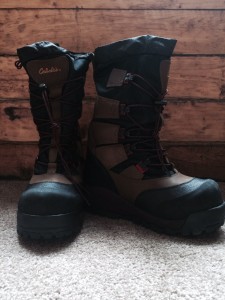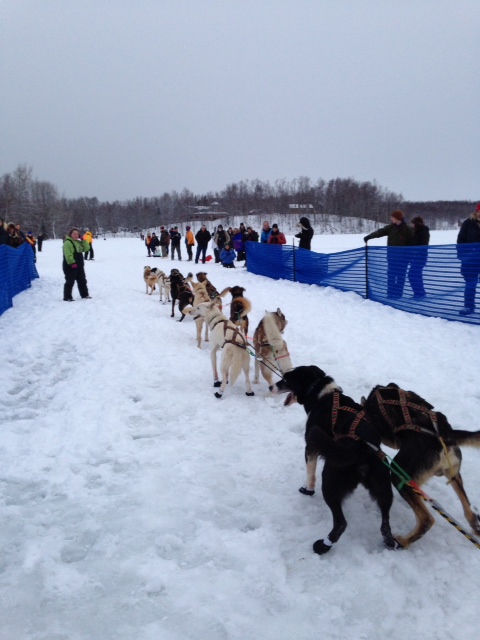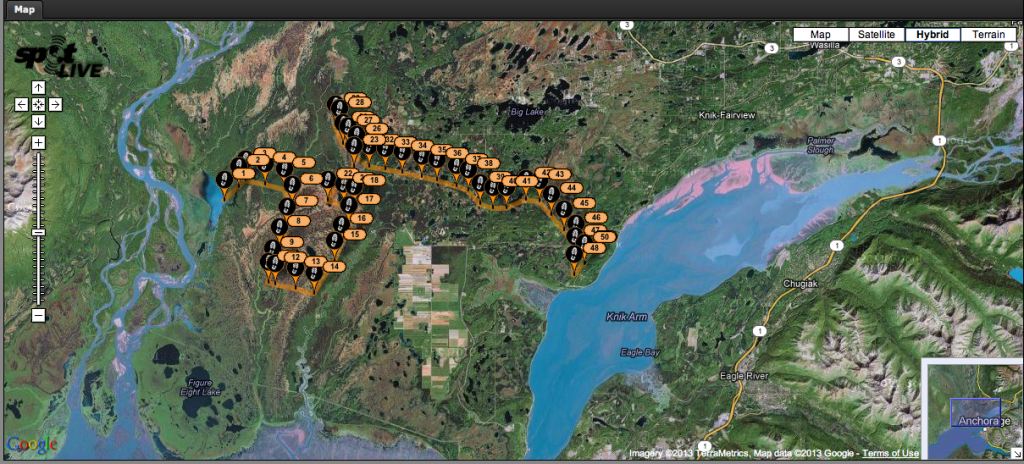 I (Robert) have been using either Steger Mukluks or a combo-system with my Neos for years on the trails. My Neos have been worn for seven thousand miles over the last few winters and it is time for a change.
I (Robert) have been using either Steger Mukluks or a combo-system with my Neos for years on the trails. My Neos have been worn for seven thousand miles over the last few winters and it is time for a change.
This year I plan on using the Trans-Alaska III Pac Boot.
Living in Willow, Alaska it can get pretty cold– usually we are in the mid-20s below zero in the middle of winter and out on the trails it will be much colder. I once measured -36 degrees on the Yentna River a couple years ago and I am sure I have been in much colder.
With these boots I plan to replace the liners with a beefier set that many mushers use. When I tried them on and walked around for a while yesterday they were light and comfortable. I typically wear a two sock set up–a moisture wicking material under a Smart-wool type. In my Neos my feet often got wet from sweat and made my feet very uncomfortable but the boot system was very light and I could get off the sled and run with no problems.
I will amend this review after I wear them for several runs.
From the Cabela’s website:
From the Iditarod trail to the treestand, these boots have proven they are true cold-weather performers. A 13mm Texel® removable liner reflects heat inward to minimize loss. Beneath that, the Moisture Trap footbed wicks away perspiration and condensation. A 1/2″ layer of EVA foam, coupled with the nylon-covered Phylon midsole, puts 3″ of cold-blocking material between your feet and the ground. The tough, flexible vamps are protected by a triple-layer, abrasion-resistant toe guard, and the rubber toe cap ensures longer wear. These boots have a reflective, lightweight waterproof shell with lightweight, reflective nylon shafts. Radiantex™ reflective coating. The 8″ liner allows for pants inside the boots, and the rip-stop nylon gaiter has a cord-locked drawcord to keep out snow. They’re easy to tighten, thanks to a one-pull ball bearing lacing system. Inside, a heat pack pocket allows you to insert toe warmer heat packs.
Height: 15″.
Average weight: 5.8 lbs./pair.
Men’s whole sizes: 7-13.
Color: Black/Tan.
Cost: $199.99 in-store or $219.00 on website
What types of boots do you wear on the trail?





